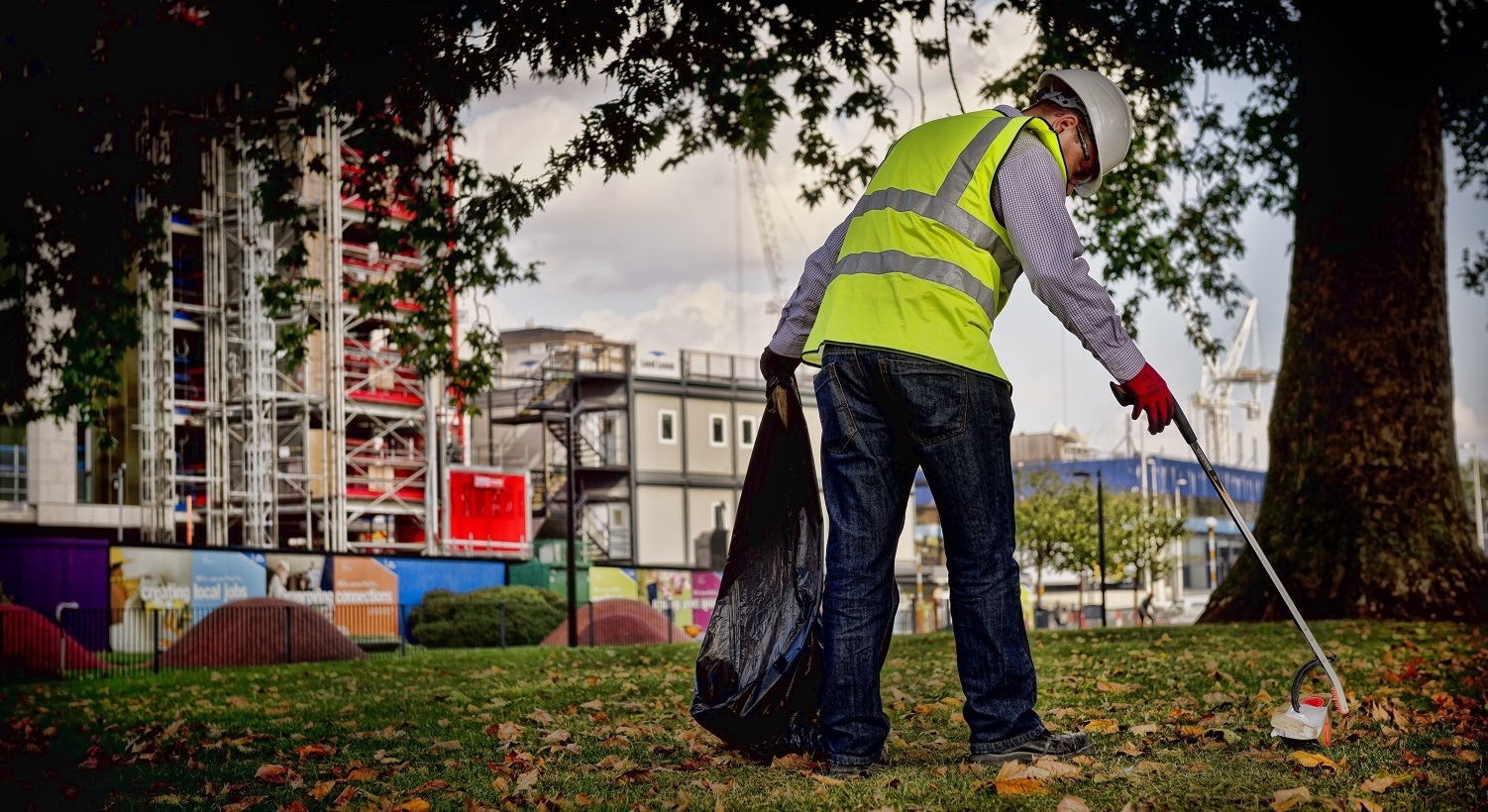“Resolving Complaints” is a series of resources developed by the Scheme to support construction sites to address and prevent known sources of complaints from the public. Available for free on the Best Practice Hub, these resources will focus on proactive actions that sites can undertake to minimise their impact on the local community.
Litter – What is the problem?
The appearance and condition of a construction site and its perimeter is often the first, only and lasting impression that members of the public who live and work around the activity have of the construction industry. The Considerate Constructors Scheme regularly receives complaints regarding litter on and around construction projects. This instalment of Resolving Complaints, focusing on litter, contains useful resources and best practices to support our registered activity in tackling this issue at the source.
Managing the Impact of Litter
Those that live and work around construction activity may be heavily impacted by litter from construction activity if this is not dealt with correctly. Paths and verges may become full of discarded or windblown materials, which can also travel further from the site perimeter. These materials may also cause damage to the environment affecting flora and fauna.
There are a number of common practices constructors should be following to minimise and prevent complaints relating to litter on and around construction sites, including:
- Ordering the correct amount of all material that are delivered to the site as far as is possible, and ensuring these materials are packaged using sustainable packaging that can either be reused or recycled. Polystyrene should be avoided where possible.
- Correctly and securely storing all products and materials on site to prevent them from being blown away.
- Ensure skips are used to store any waste materials and that skip covers are used.
- Provide plenty of litter and recycling bins around the site.
- Carry out regular litter picks around the site as well as the perimeter and surrounding areas.
- Ensure adequate welfare units are available for the workforce to prevent operatives eating in their cars or around the site.
Best Practice Resources
Stop Litter Scheme – This contractor founded the Stop Litter scheme in order to tackle litter at the source. Organisations can register and receive van stickers to apply to their fleet. This demonstrates their support for the scheme, and allows members of the public to anonymously alert them if one of their drivers is caught littering. Once notified, Stop Litter supports the organisation with material and info packs to conduct driver training to raise their awareness around the damage that littering causes.
Litter Heroes – This contractor has introduced the ‘Litter Hero’ role among their workforce. Heroes have a responsibility to promote a clean working environment and report on waste management to the Environmental Team. Staff representatives from every department make up the Litter Heroes network. The objective is to identify areas that needs tidying or litter picking and then dispatch a team to assist with the required works. The litter picks are not limited to the site area, but are also completed in adjacent community areas, parks or woodland.
Two Minute Litter Pick – This contractor has created four ‘Two Minute Litter Pick’ stations for the public using recycled materials. These are placed at each elevation of the site perimeter to encourage the public to recycle and dispose of their general waste in the litter bins provided as they walk around the site. Passers-by are encouraged to use them for their own litter or for waste spotted nearby. The bins are emptied every day and brought in at the end of the working day when the welfare area is getting ready to shut.
No Butts Campaign – On this project, two college students approached the site in relation to the recycling of cigarette butts. The students provided special recycling bins called stashtrays, to dispose of cigarette butts in the smoking area on site, where workers currently dispose of them in normal bins. The plastic in cigarette butts is a single use plastic where 6 trillion cigarette butts are wasted annually. The plastic from the recycled butts is now reused in manufacturing and can be used for any purpose.
Did you find this article helpful?
Please rate this article

Loading...





